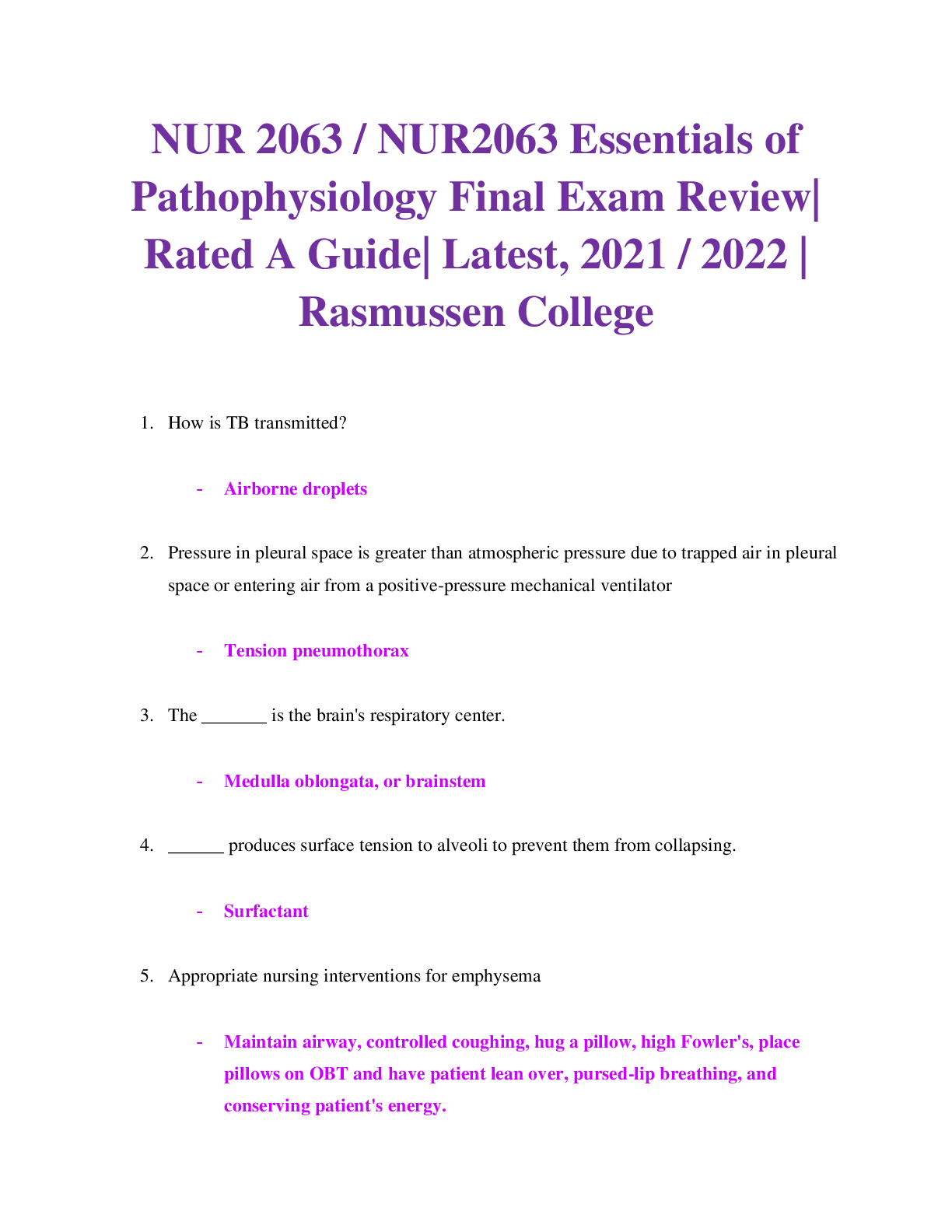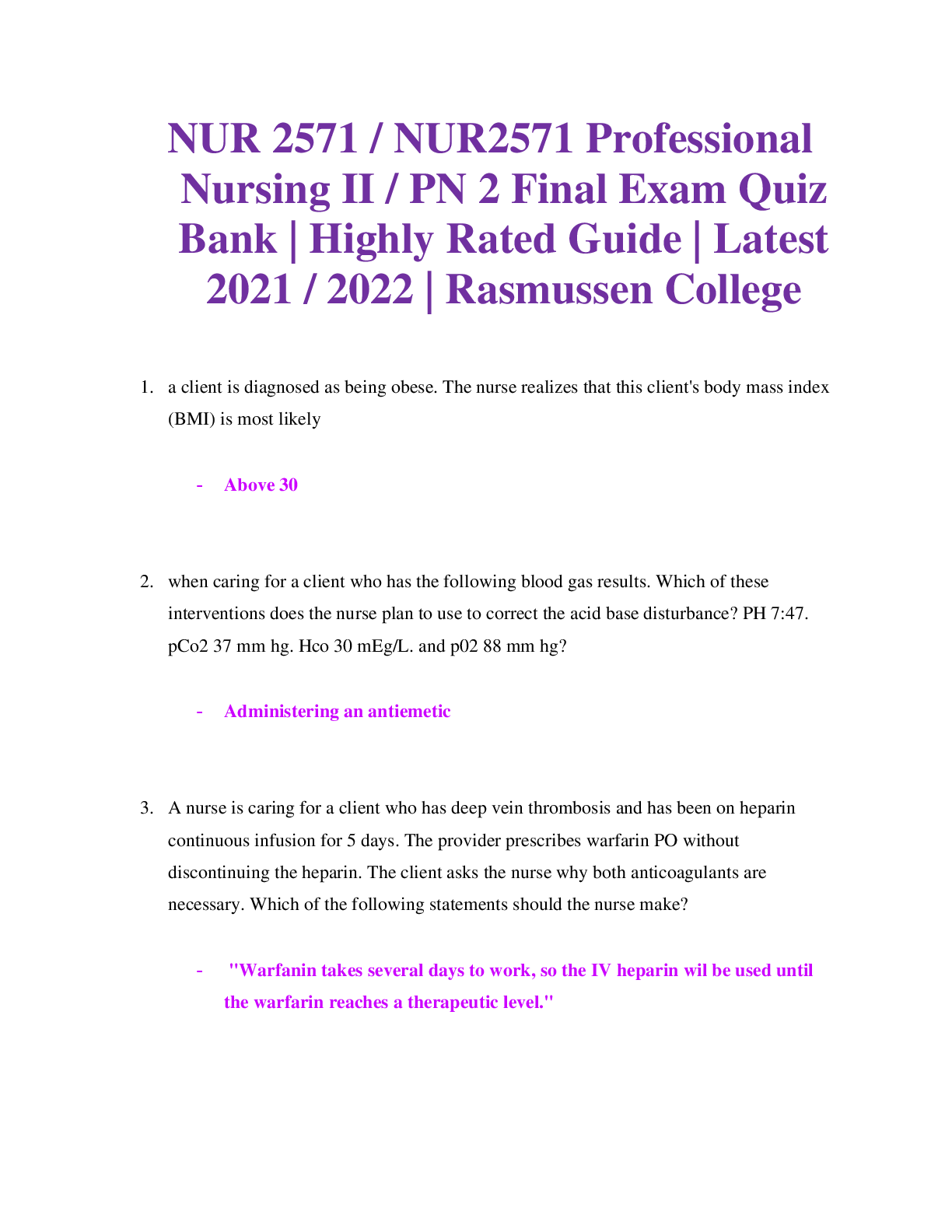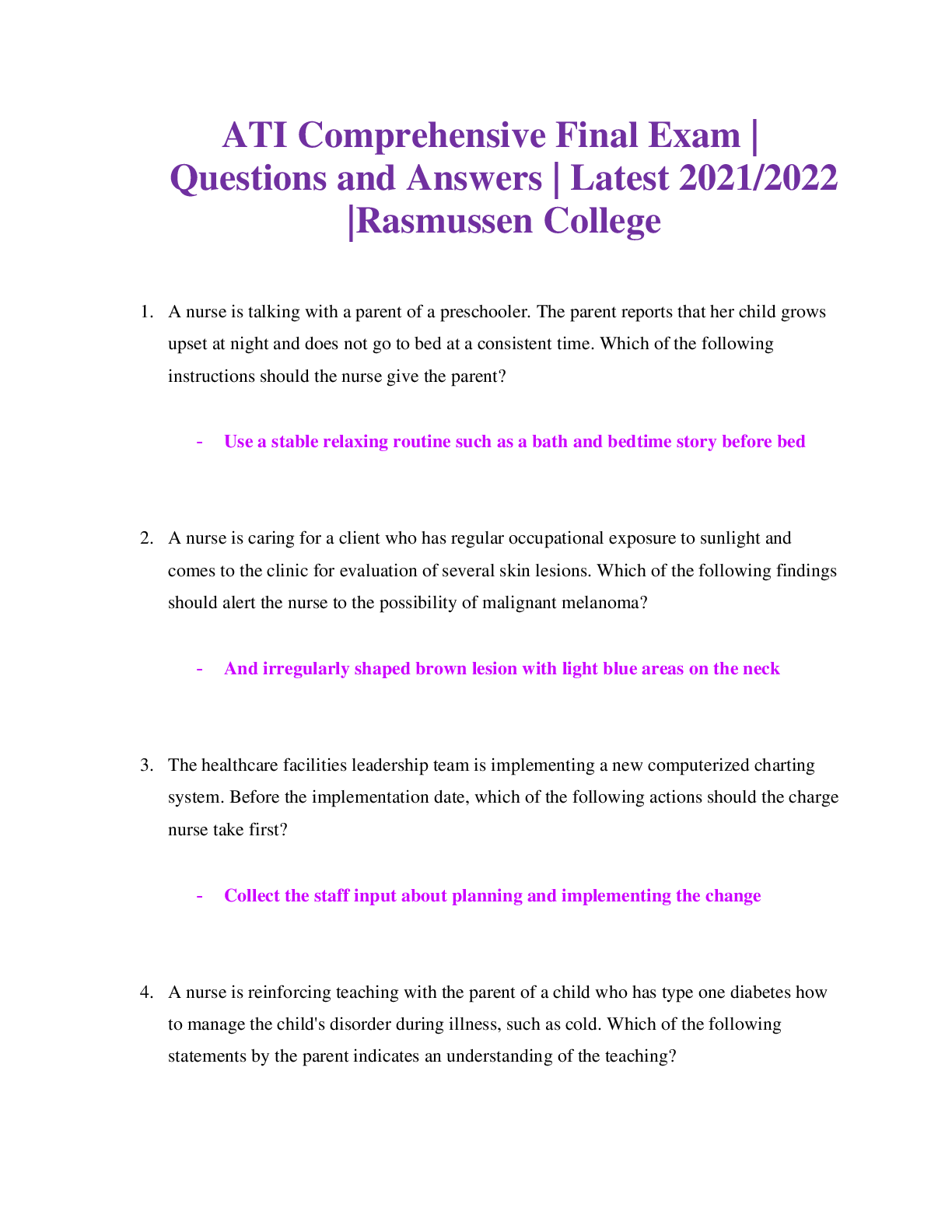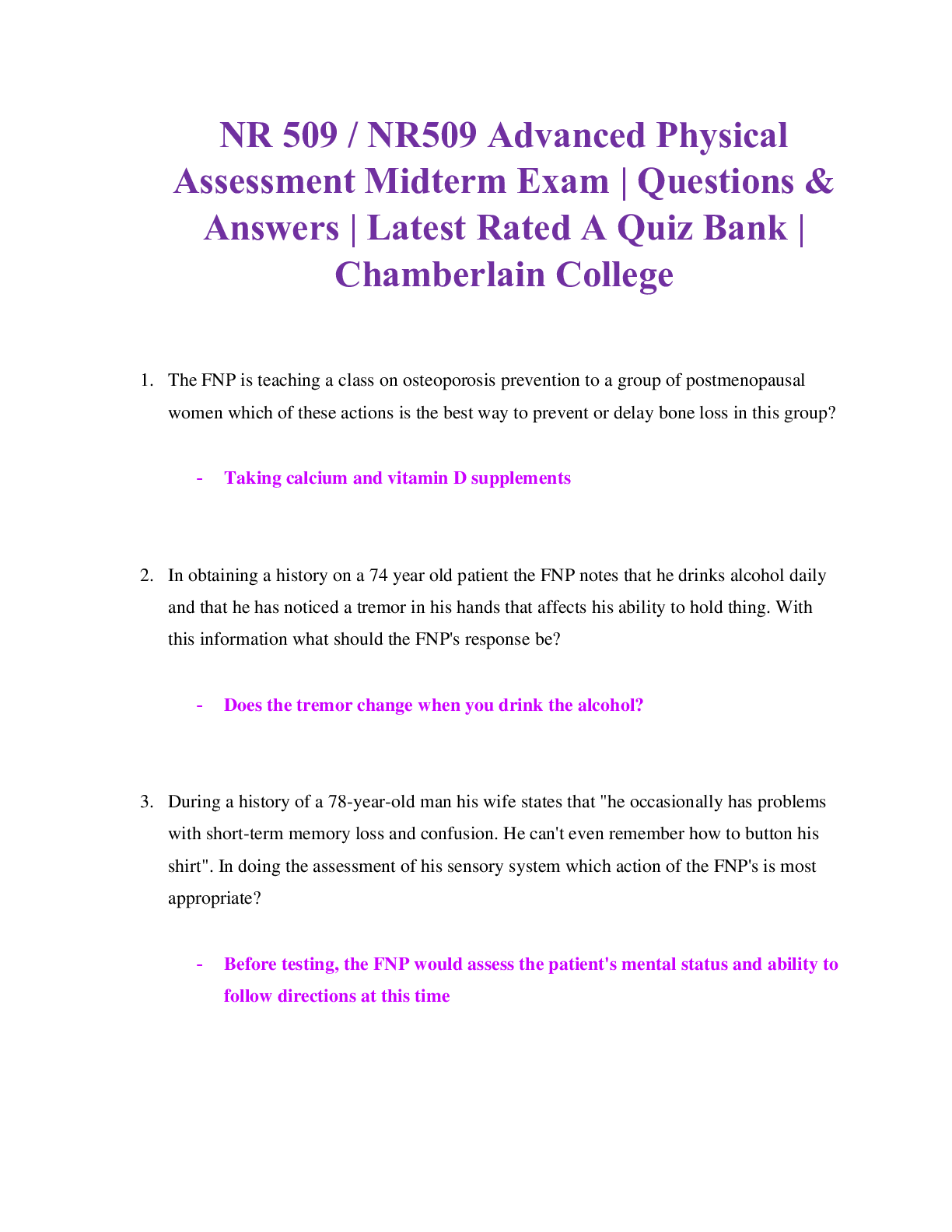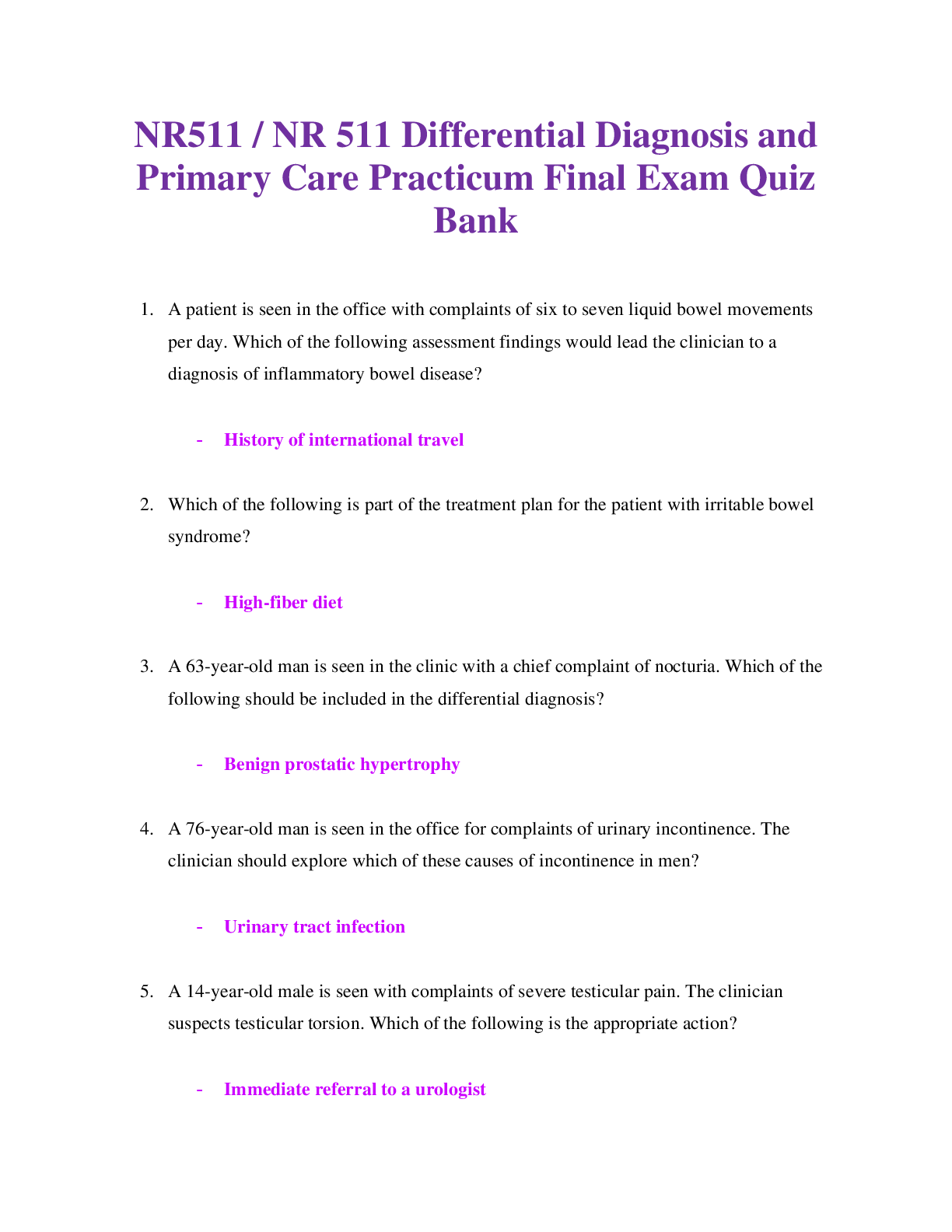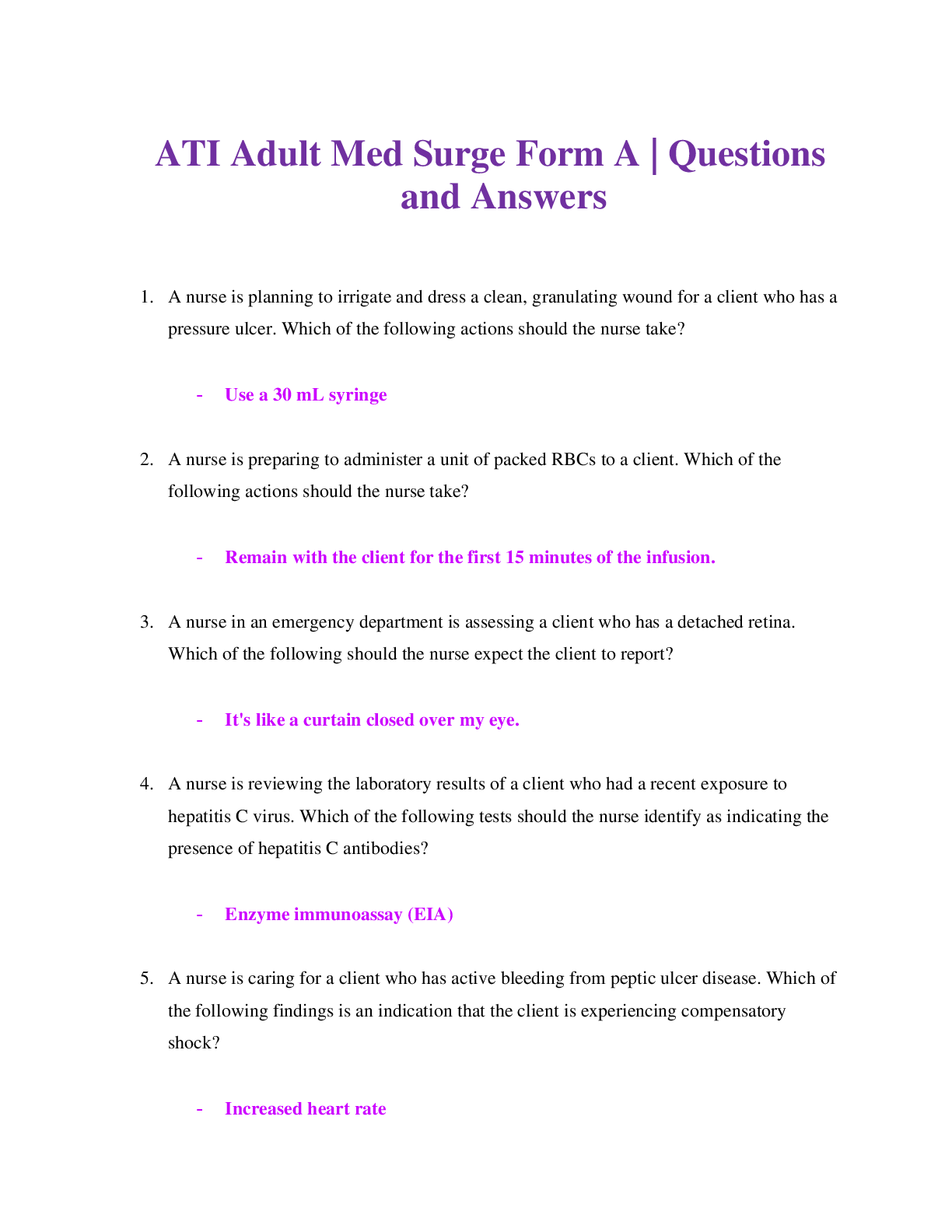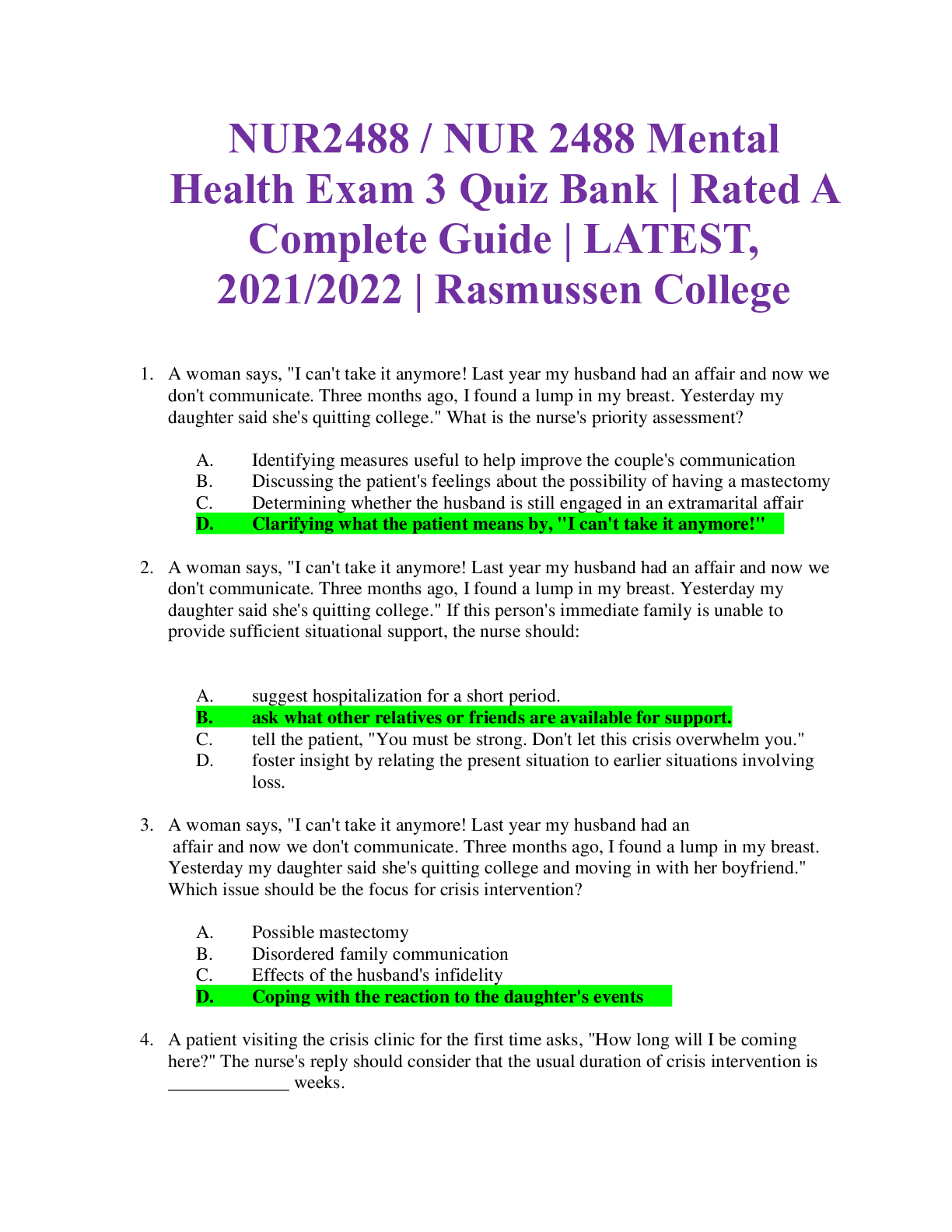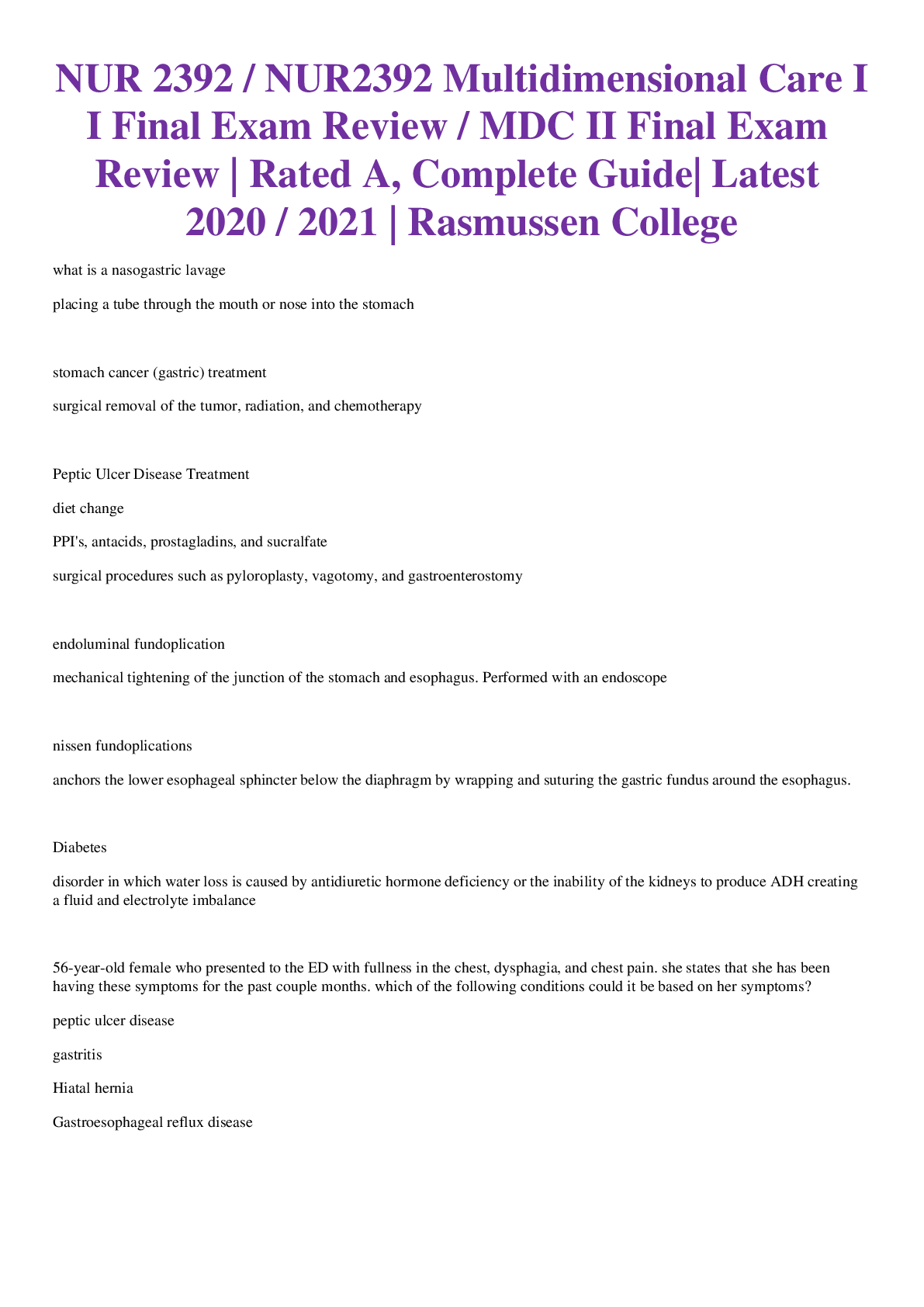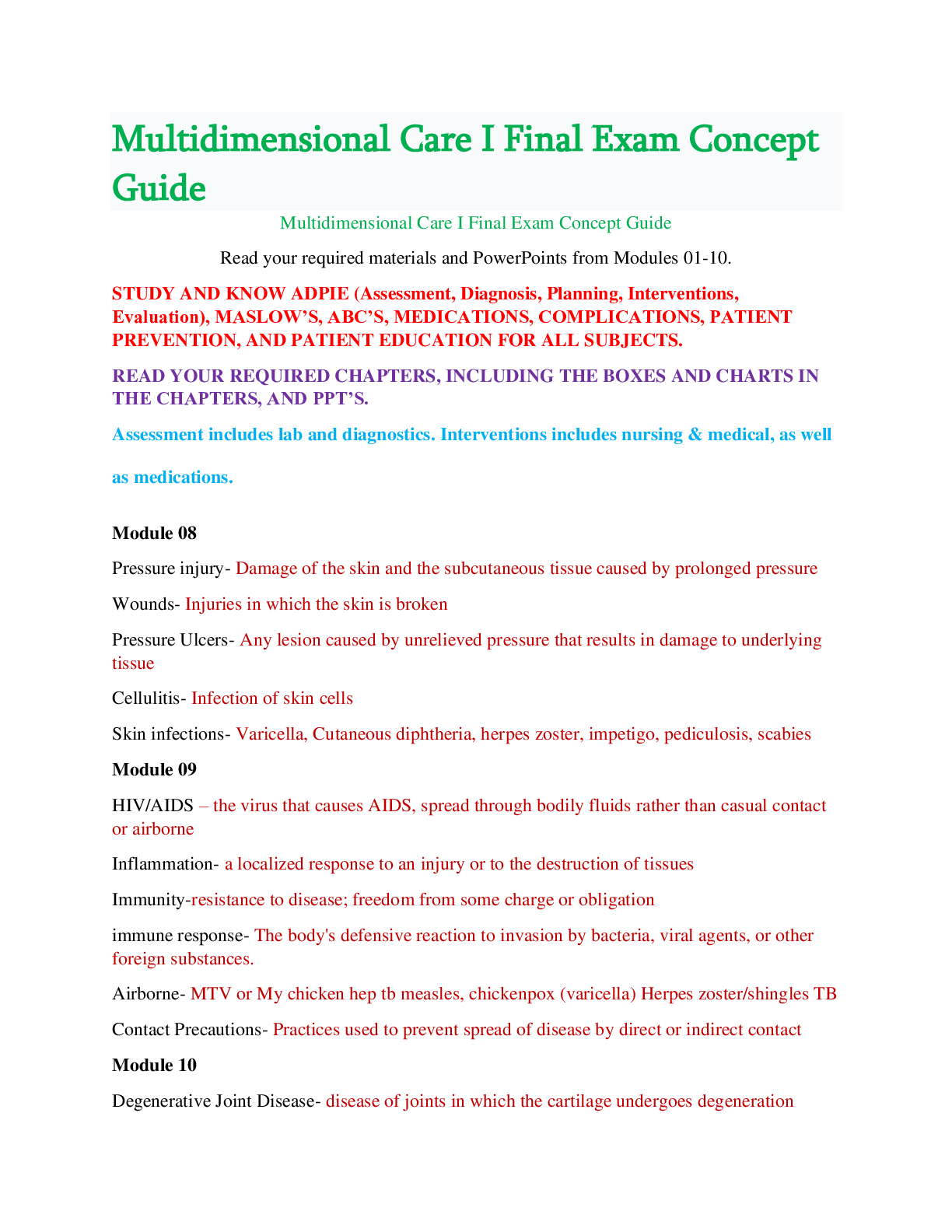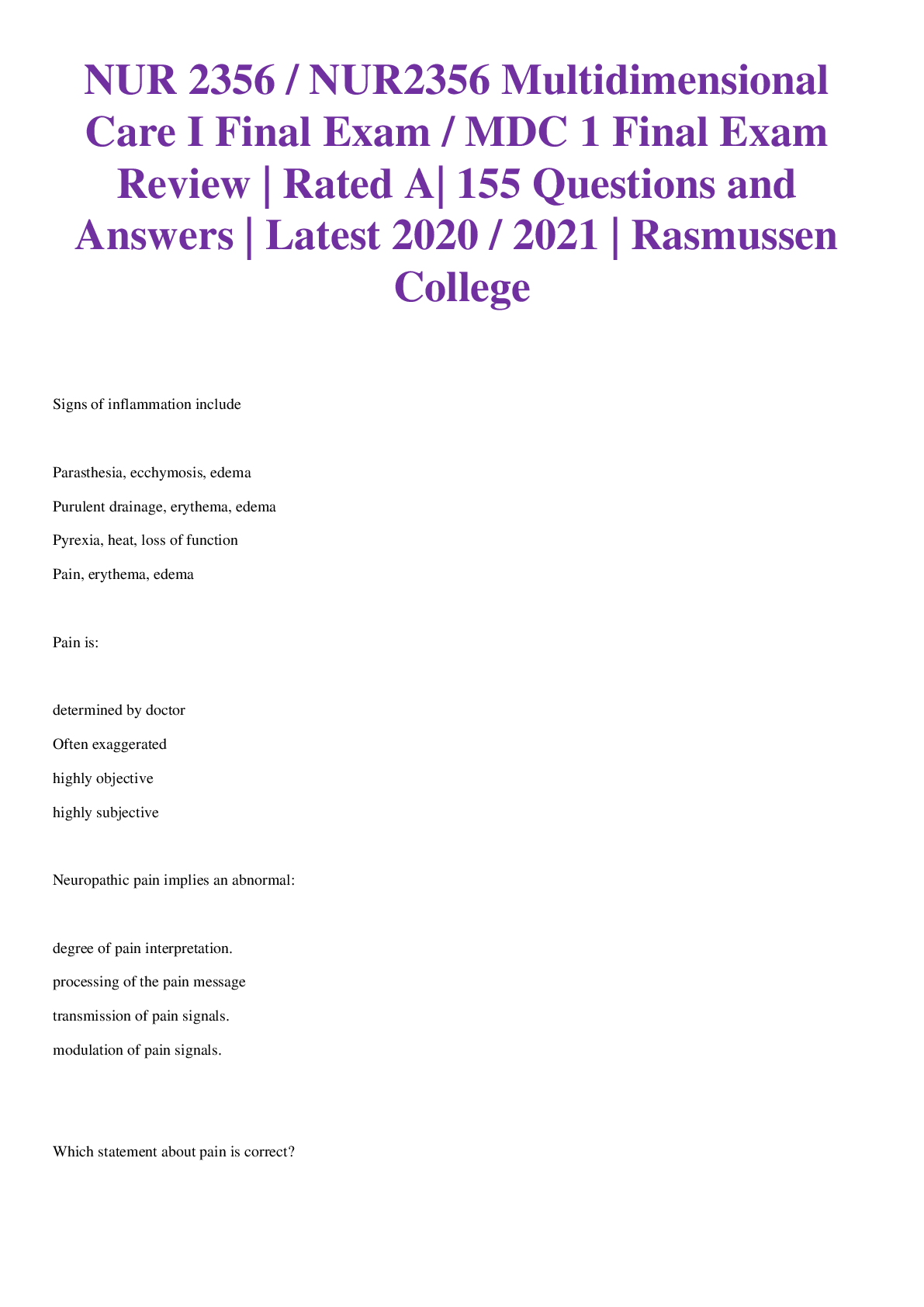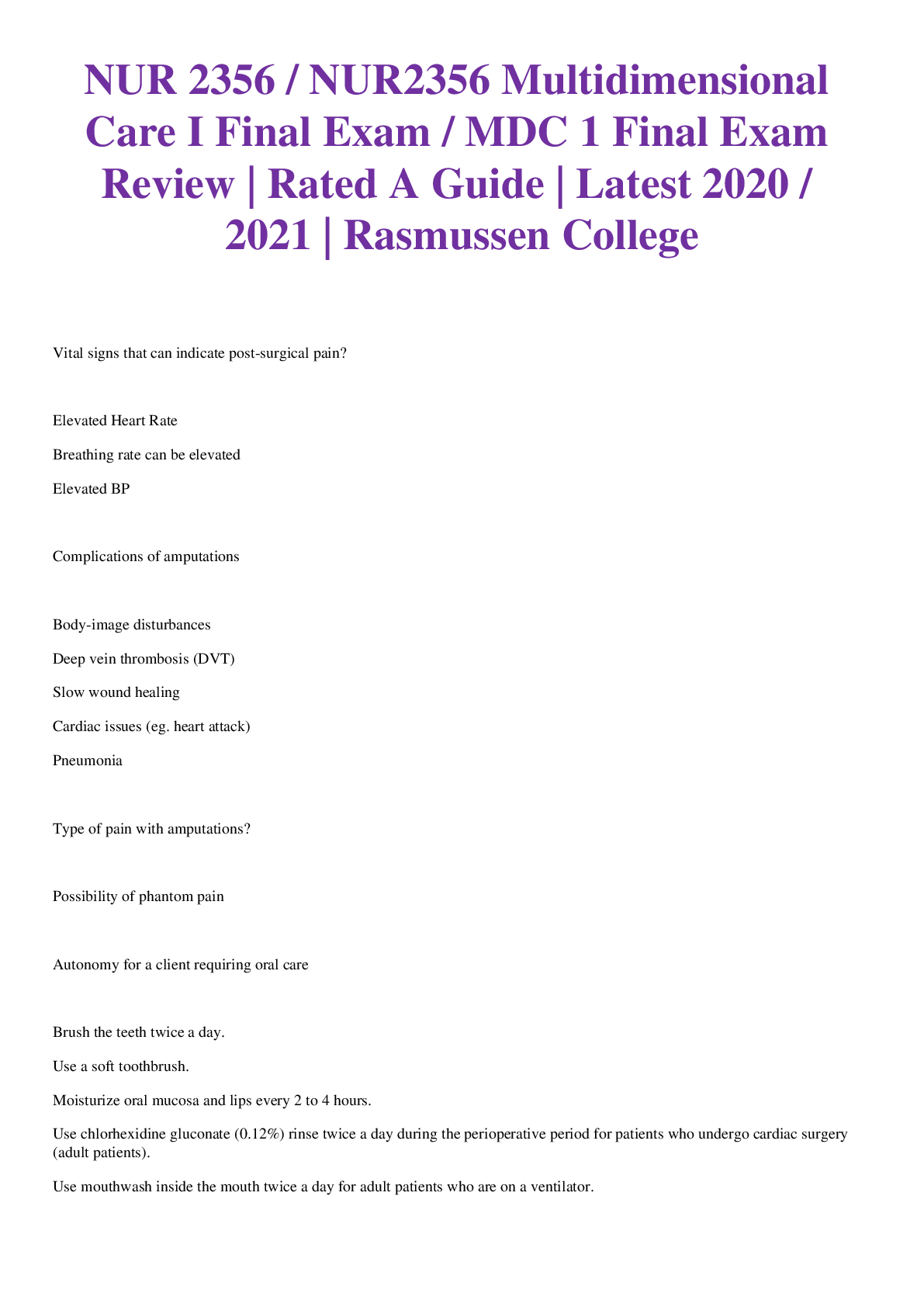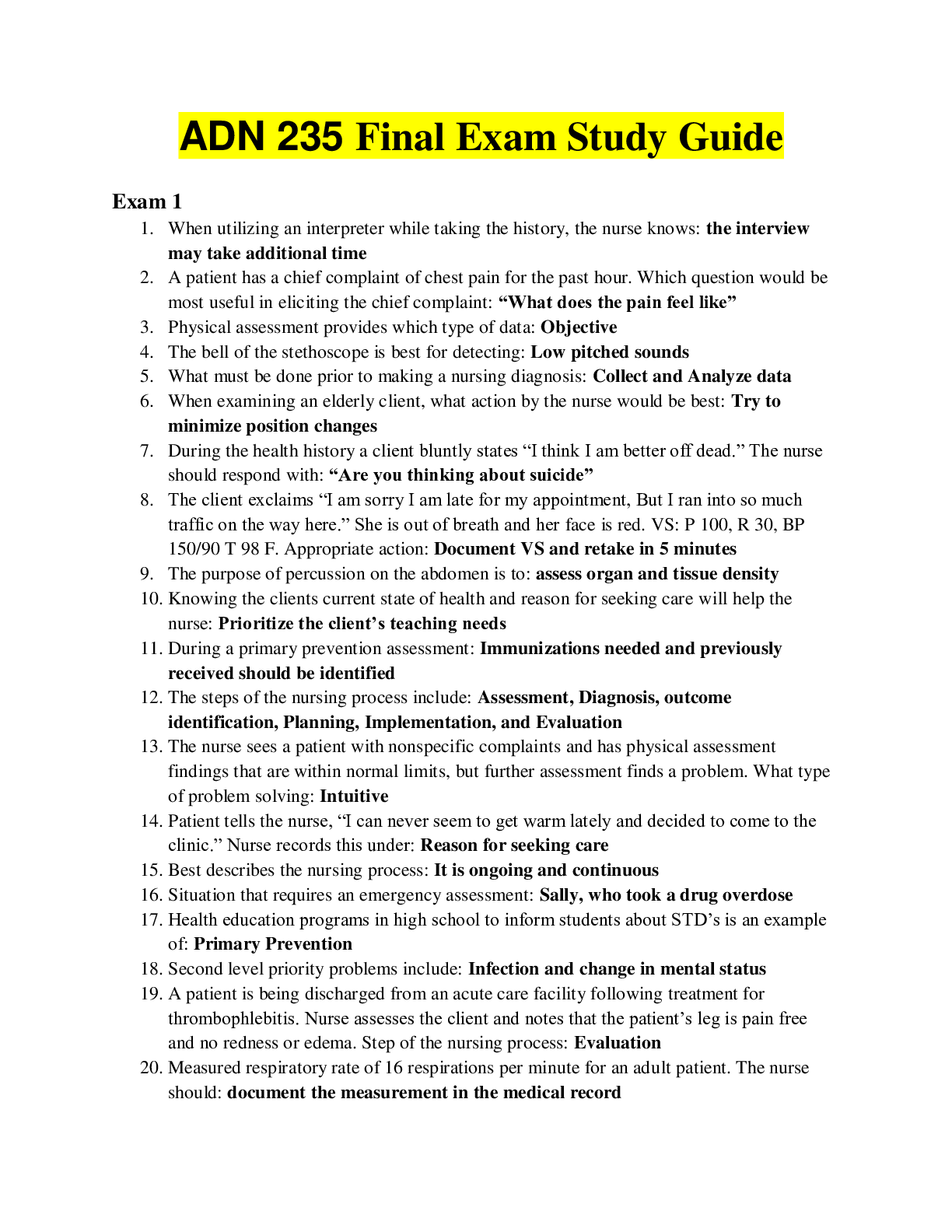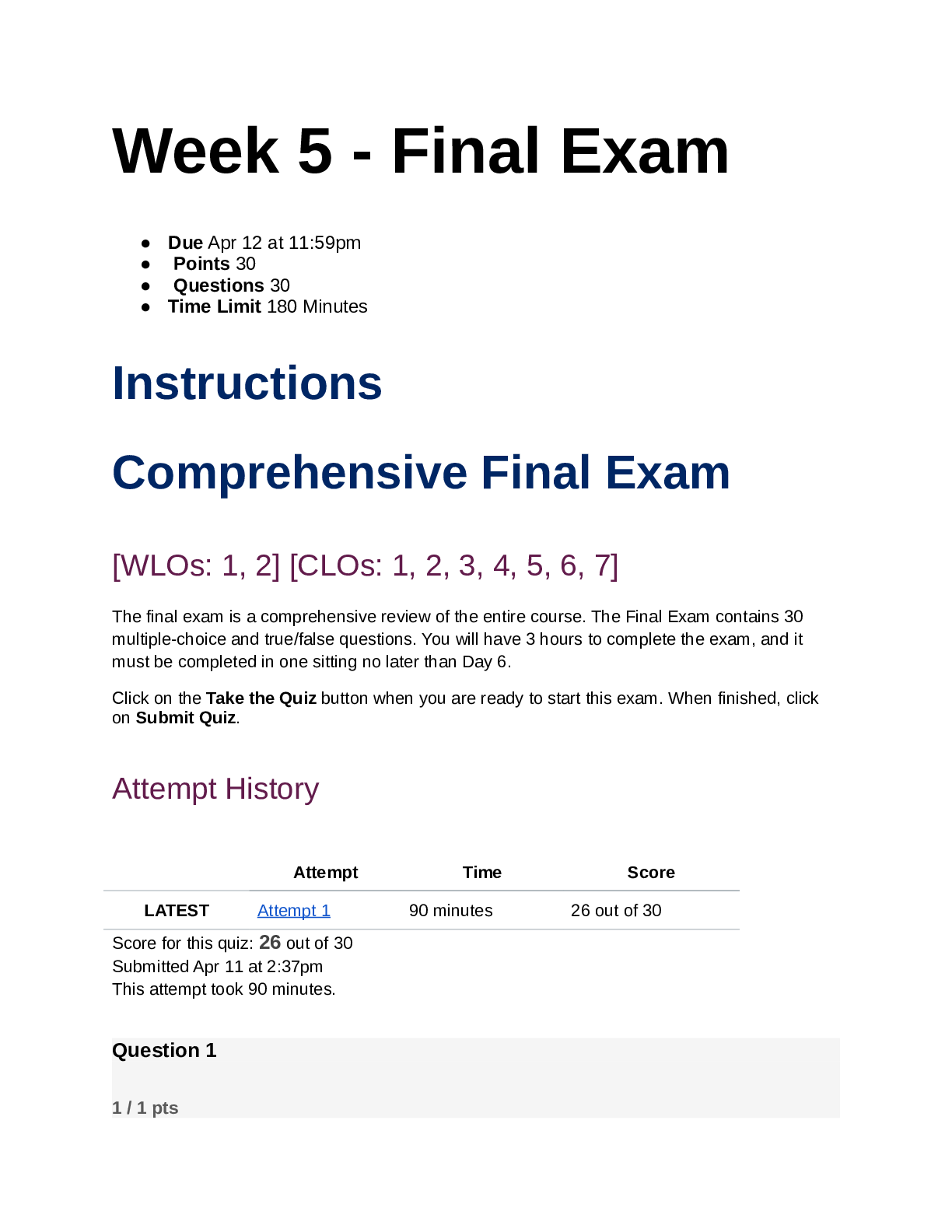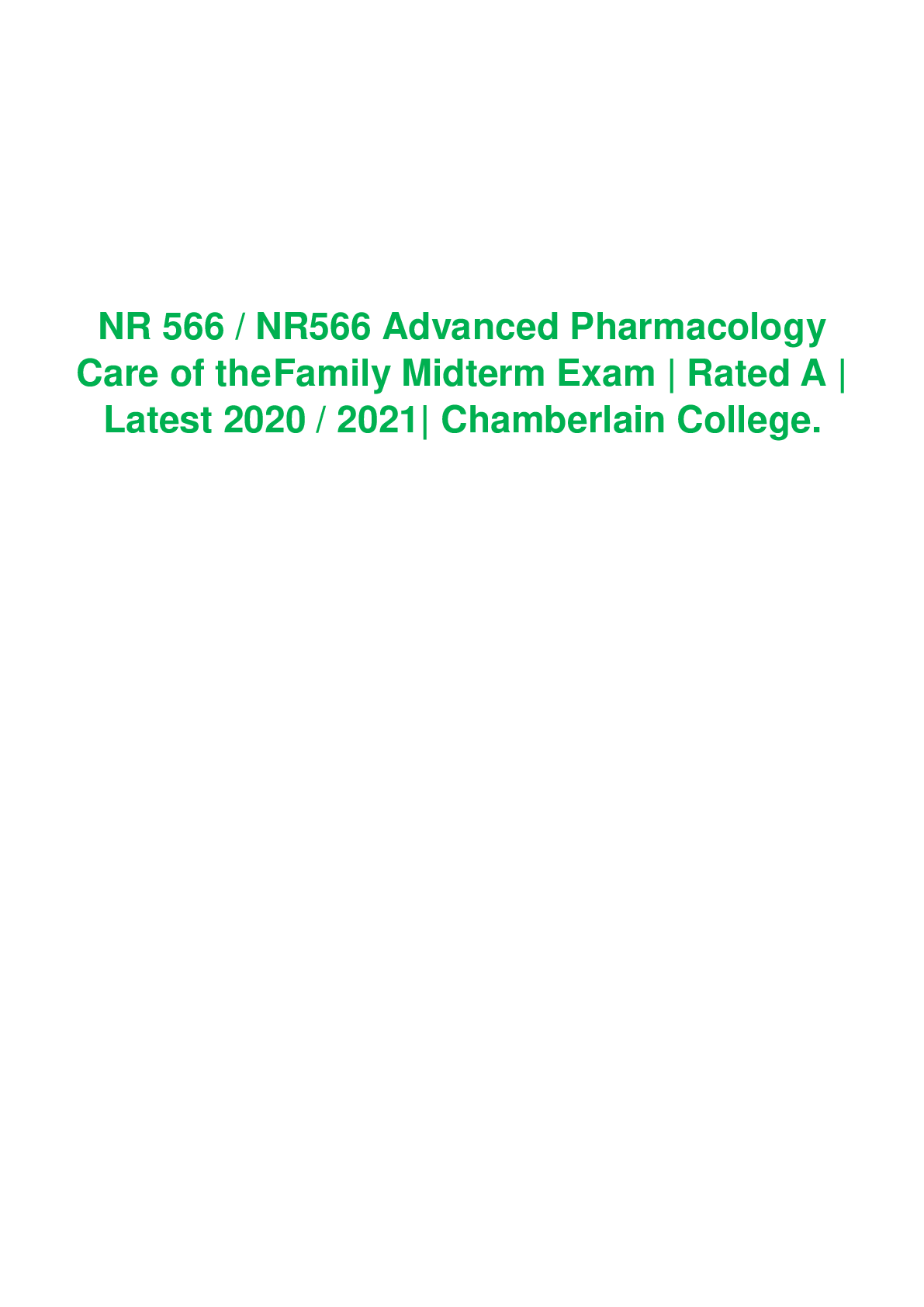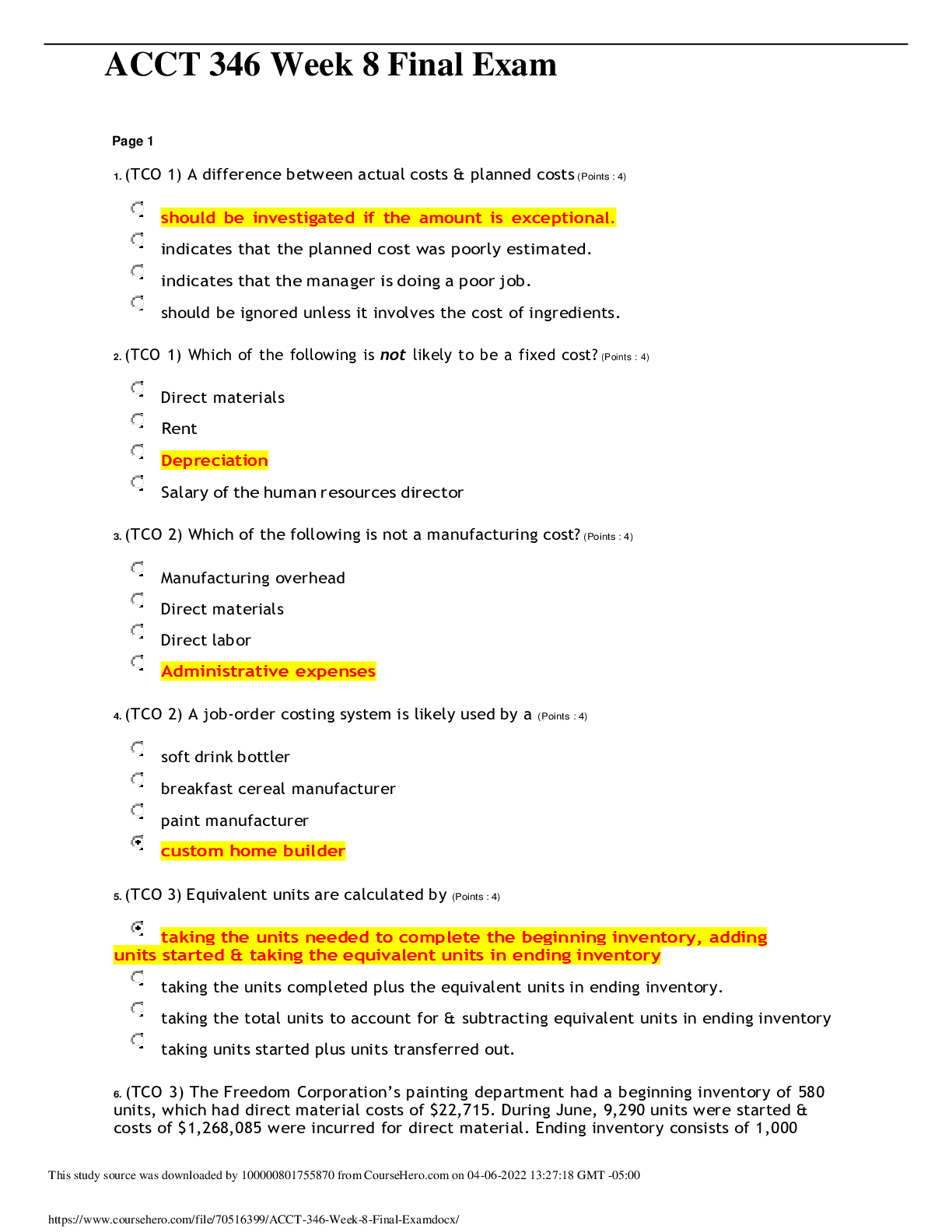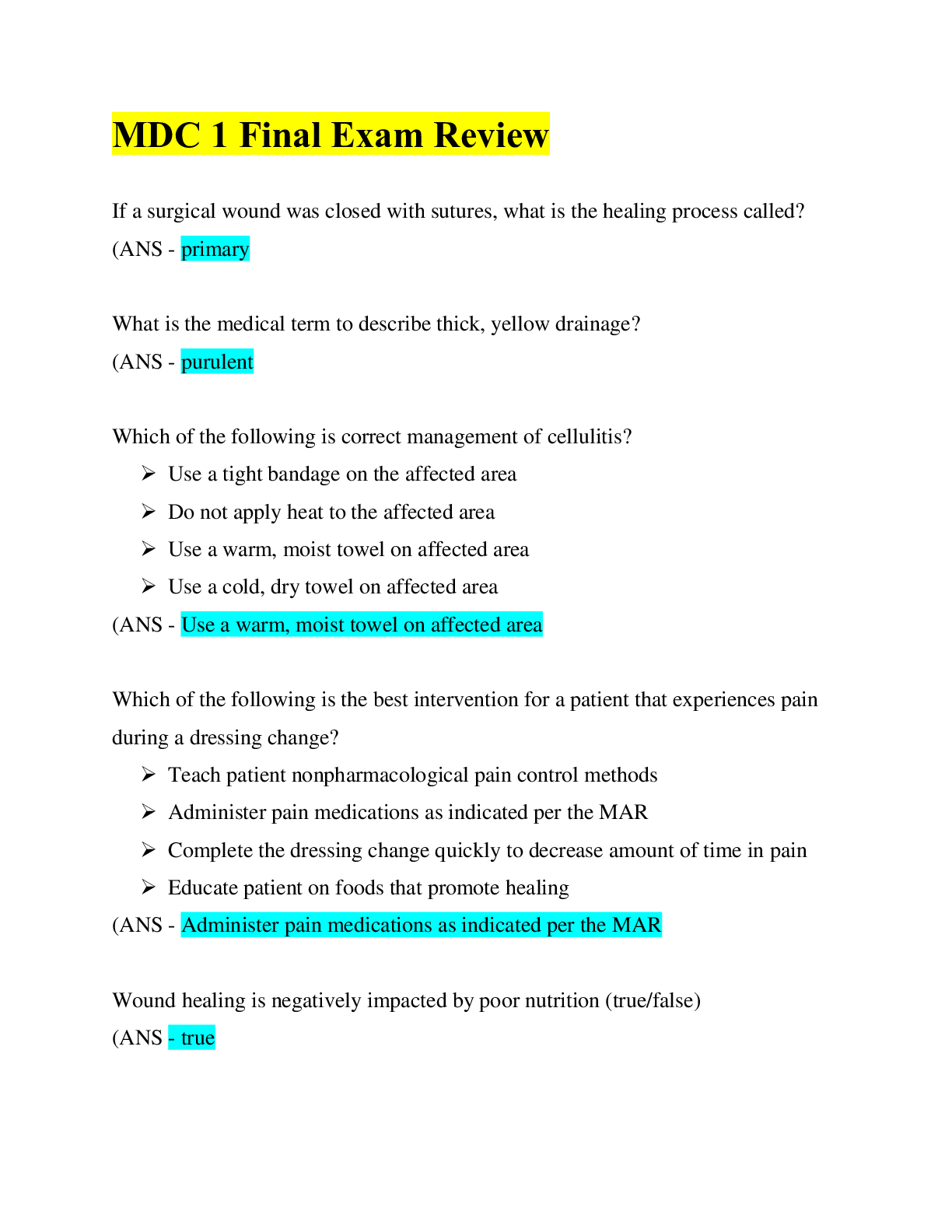BioChemistry > EXAM > NUR 2356 - NUR2356 Multidimensional Care I Final exam Review / MDC I Final Exam | Rated A (All)
NUR 2356 - NUR2356 Multidimensional Care I Final exam Review / MDC I Final Exam | Rated A
Document Content and Description Below
NUR 2356 / NUR2356 Multidimensional Care I Final exam Review / MDC I Final Exam | Rated A, Guide| Latest 2020 / 2021 | Rasmussen College 1. The nurse should suspect ACS (acute compartment syndrom... e) when the patient complains of _______________. - Rapid, - discoloration, - pain worse than that of the fracture, - weak pulse, and - tightness. 2. A patient expresses concerns about their culture and medications. What statement is appropriate to respond? - "Tell me more and let's create a plan together." 3. Patient has vital signs of: HR 95, R 15, BP 164/100, T 98.7. What vital sign would be concerning and could indicate pain? - BP 164/100 4. "Don't worry, everything will be fine." The nurse is __________________. - Reassuring 5. Crepitus in osteoarthritis is due to ___________. - Loss of bone particles 6. T/F: The abduction pillow is used to prevent internal rotation after hip surgery. - True. 7. What fracture is complete with injury to the skin? - Open. 8. What is an example of a laceration? - Skin tear 9. Who is at greater risk of become infected? - Elderly, those taking steroids, HIV patients 10. Place in order the wound healing process. - Hemostasis - Inflammation - Proliferate - Maturation 11. glaucoma caused by - increased intraocular pressure in a hollow organ (normal ICP 20mmHg) 12. normal skin findings - Intact - Warm - Moist - Smooth - Soft - Sebum= fatty secretion of the sebaceous glands of the skin - Elastic - Firm 13. primary healing - small, clean wound 14. First intention healing - reparative process when wound edges are directly next to one another- edges are well approximated 15. Cataract symptoms - -Cloudy or blurry vision - -Colors seem faded - -Glare - -Poor night vision - -Double vision or multiple images -Frequent prescription changes in lenses 16. Infection Types - Bacteria (single cell microorganisms i.e. strep, bacterial uti, e.coli, salmonella), - Virus (viral infection by tiny infectious organisms smaller than bacteria, i.e cold, chickenpox, measles), - Fungi (found in the environment like moist areas - ex. Are yeast and mold like yeast infection, thrush, athletes foot), - Protozoa - Helminths. [Show More]
Last updated: 11 months ago
Preview 1 out of 26 pages
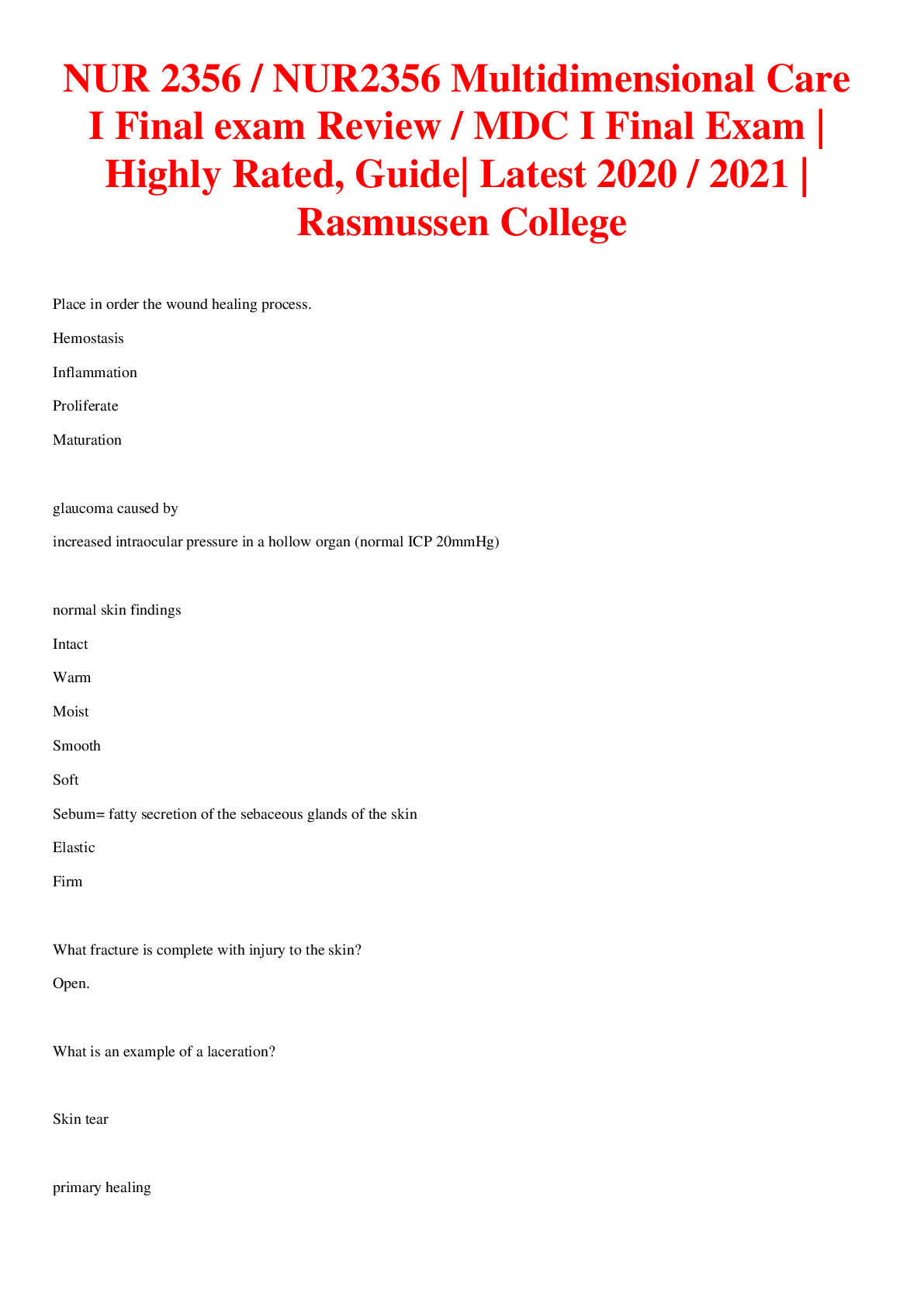
Buy this document to get the full access instantly
Instant Download Access after purchase
Buy NowInstant download
We Accept:

Reviews( 0 )
$11.00
Can't find what you want? Try our AI powered Search
Document information
Connected school, study & course
About the document
Uploaded On
Nov 25, 2020
Number of pages
26
Written in
Additional information
This document has been written for:
Uploaded
Nov 25, 2020
Downloads
1
Views
164

